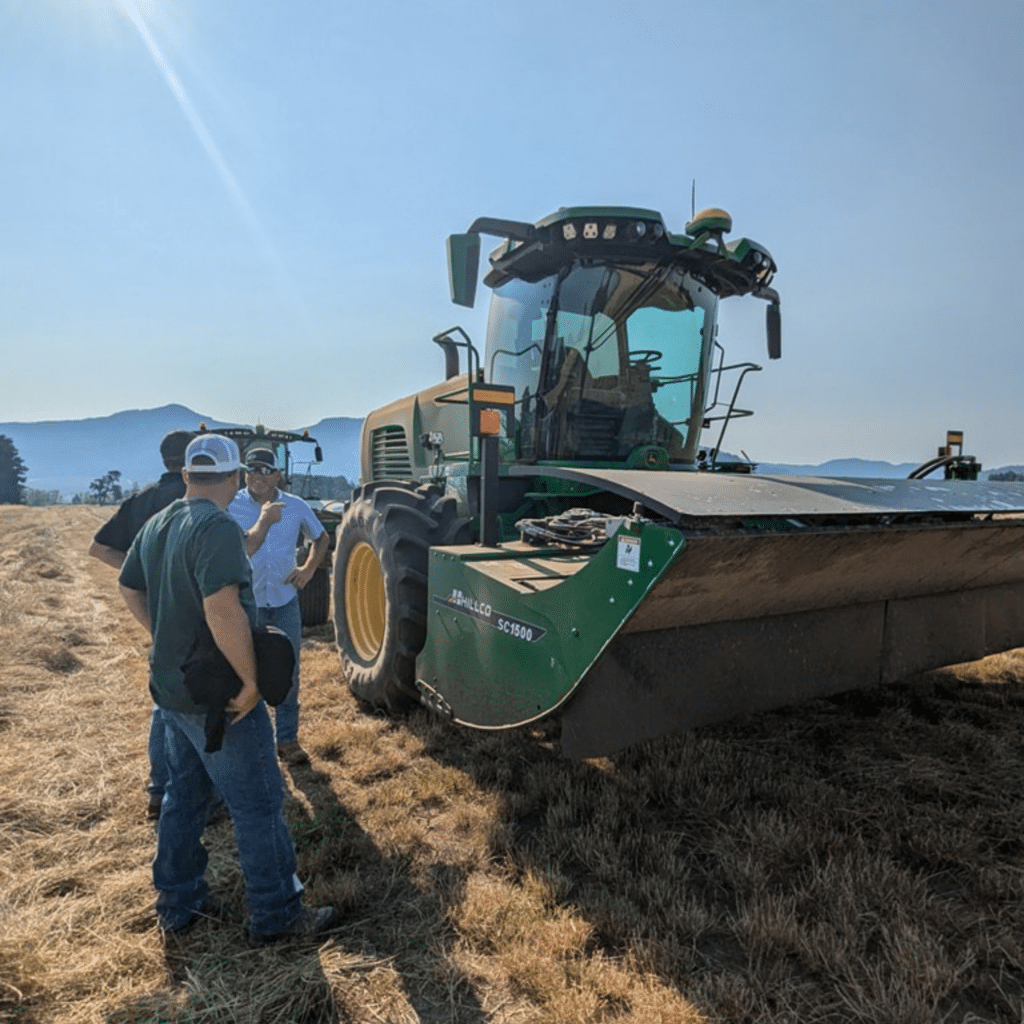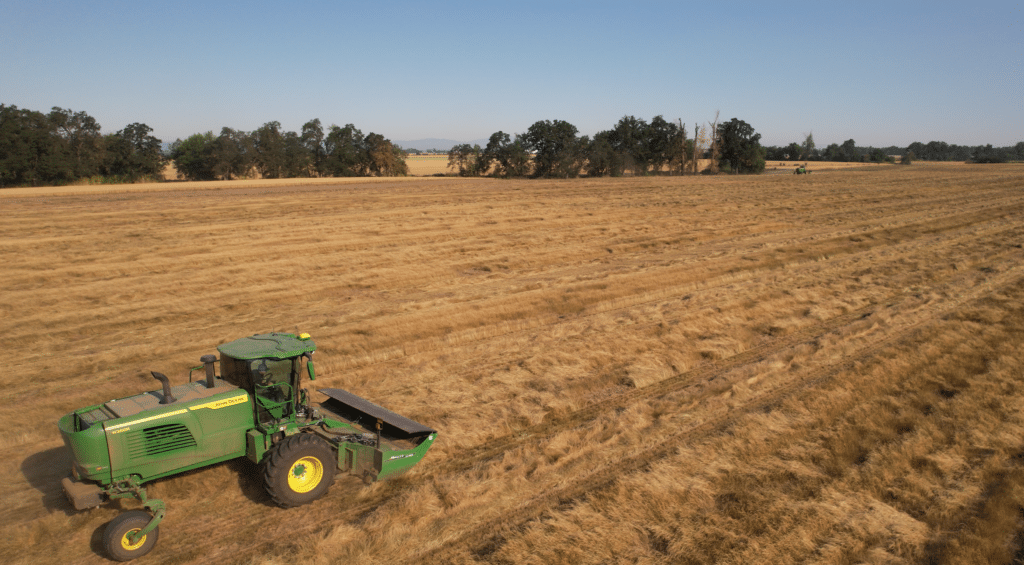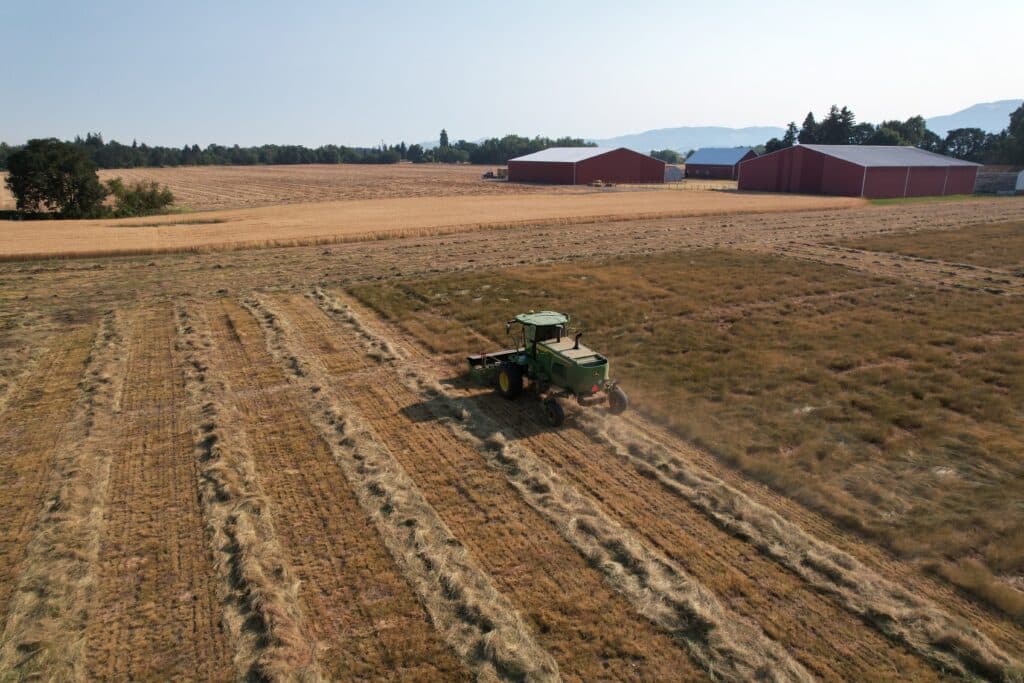Farmer Feature: Ryan Malpass on the Game-Changing SC1500 Specialty Crop Header

Malpass Heritage Farms

At Malpass Heritage Farms, located within the southern end of Oregon’s Willamette Valley, innovation is more than a trend—it’s a necessity. As fourth-generation grass seed growers, the Malpass family knows how important it is to stay ahead of the curve, especially in a region that can grow up to 250 different cool-season crops.
We caught up with Ryan Malpass during harvest in 2024. Ryan grew up working the same soil his great-grandparents did. From riding on a cab-less Hesston windrower as a kid to leading this diverse and tech-forward operation in the valley, Ryan shared what makes the Hillco SC1500 Specialty Crop Header a standout tool in their high-efficiency, multi-crop operation.

A Versatile Tool for a Versatile Farm
“With our climate, we can grow an incredible range of crops,” Ryan explains. “One day we’re in perennial ryegrass, and the next we’re switching to clover or a vegetable seed variety.”
That means equipment flexibility and quick crop transitions are critical. The SC1500’s design makes that possible.
“This header is ground-breaking. It saves us about 50% of the time it would normally take to clean out a machine between crops. That’s a HUGE selling point for us.”
Why does that matter? In the Malpass operation, harvest windows are tight, and crop purity is non-negotiable. “The time we save on clean-up keeps us that much further ahead and on schedule. We LOVE that factor—it has made our lives WAY better.”
Built for Speed Efficiency
The Malpass family was an early adopter of air header technology and has worked closely with manufacturers on product development. When the SC1500 came onto the scene, it was the natural next step in their progression toward higher efficiency and reduced labor needs.
“This machine can do two and a half times the work of a standard swather,” Ryan notes.
They’ve reduced their fleet, cut down on operators, and increased throughput—all without sacrificing quality.
Durability You Can Count On
In Ryan’s words, “Downtime is crucial—we can’t afford it.” With high-stakes windows for harvest and a wide range of crops maturing in close proximity, reliability is non-negotiable.
“The SC1500 is plenty stout. We’ve had really good luck operating within our critical harvest windows, and that durability helps protect our bottom line.”
Precision Windrows with Less Air Disturbance

Another standout feature for the Malpass team? The ability to customize quality windrows.
“With the Hillco air header, we’re able to run lower volumes of air than other models. That means less disturbance to the row and ultimately more seed in the tank when we harvest.”
Ryan adds, “It leaves a really quality windrow. And the ability to fine-tune the header settings throughout the day, hour by hour, makes a huge difference in crop capture and consistency.”
A Machine That Truly Stands Out
So what’s the bottom line from a fourth-generation farmer who’s seen it all?
The Hillco SC1500 stands out because it meets the need: clean transitions between crops, durable build, and efficient harvest.

